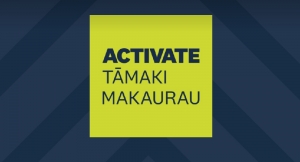Identifying a Company in Decline: Unveiling the Warning Signs of Insolvency
In business, companies often experience fluctuations in performance and face various challenges. However, distinguishing between temporary setbacks and a persistent decline is crucial for business owners and stakeholders. Recognizing the early warning signs of a company in decline allows for timely intervention and strategic decision-making. In this article, we will explore key indicators to identify a company in decline, ranging from business performance and staff morale to reputation, market perception, financial distress, and cash flow crisis.
Key indicators to identify a company in decline
1. Business Performance: One of the most evident signs of a company in decline is a consistent decline in business performance. This decline can manifest through decreasing sales revenue, declining profits, eroding market share, or diminishing customer retention. Key performance indicators (KPIs) such as sales growth, profit margins, and customer satisfaction scores can provide valuable insights into a company's trajectory.
2. Staff Morale: Employee morale is a reflection of the overall health of a company. A decline in staff morale is often linked to several factors, including uncertainty about the company's future, decreased job security, lack of recognition, and poor management. High employee turnover, increased absenteeism, and a general sense of dissatisfaction among the workforce are warning signs that should not be ignored.
3. Reputation: A company's reputation is a vital intangible asset. Decline in reputation can stem from various factors, such as product quality issues, ethical misconduct, poor customer service, or negative media coverage. A tarnished reputation can lead to a loss of trust among customers, suppliers, and partners, resulting in reduced business opportunities.
4. Market Perception: The way the market perceives a company can significantly impact its performance. A decline in market perception may be indicated by negative reviews, declining brand loyalty, or customers expressing dissatisfaction on social media platforms. Market perception directly affects consumer behaviour, and negative sentiments can lead to reduced sales and revenue.
5. Financial Distress: The financial health of a company is a fundamental aspect of its overall well-being. Warning signs of financial distress include increasing debt levels, declining liquidity, deteriorating credit ratings, and difficulties in meeting financial obligations. Companies facing financial distress may resort to cost-cutting measures, layoffs, or asset sales as desperate measures to stabilize their finances. A financial health check is recommended. Try our checklist here.
6. Cash Flow Crisis: A cash flow crisis occurs when a company lacks sufficient cash inflows to cover its operational expenses and debt obligations. It can be a result of slow-paying customers, a decrease in sales, or poor financial management. A company experiencing a cash flow crisis may struggle to pay its suppliers, meet payroll, or settle outstanding debts on time.
Warning Signs and Early Intervention:
Identifying these warning signs is crucial, and early intervention can prevent the decline from worsening. Here are some proactive steps to address a company in decline:
1. Conduct a Comprehensive Business Analysis: Perform a thorough assessment of the company's financial statements, market positioning, customer feedback, and employee engagement surveys to gain insights into the root causes of the decline.
2. Develop a Turnaround Plan: Create a well-defined and realistic turnaround plan, outlining specific actions to address the identified issues and revive the business. The plan should be based on data-driven insights and focus on sustainable growth. Consult professionals if you need help.
3. Strengthen Leadership and Management: Evaluate the effectiveness of the leadership team and make necessary changes to bring in experienced leaders who can guide the company through challenging times.
4. Engage with Employees: Communicate openly with employees to address their concerns, boost morale, and foster a culture of collaboration and innovation.
5. Rebuild Customer Trust: Invest in improving product or service quality, customer service, and addressing any complaints promptly to regain customer trust and loyalty.
6. Seek Professional Advice: Enlist the help of business consultants, financial advisors, and industry experts who can offer objective perspectives and guidance.
Identifying a company in decline is vital for taking timely action to reverse its course and safeguard its future. By being vigilant about business performance, staff morale, reputation, market perception, financial distress, and cash flow, business owners and stakeholders can address the root causes of decline and chart a path towards sustained growth and success. Proactive measures and decisive decision-making are crucial for transforming a company in decline into a thriving and resilient organization. If the warning signs suggest that the company has passed its use by date, then contact licensed insolvency practitioners for advice on the best way to wind down the company.
What Steps can be Taken to Avoid Insolvency and Business Failure in NZ?
Problems in a business generally arise slowly. Problems can become disasters if not recognised and managed. Directors have some latitude in choosing to trade out of a temporary liquidity problem or to advance an insolvency procedure. Directors must carefully consider the responsibility they have to creditors and their duties under the Companies Act 1993 and if they can turn the business around.
Steps towards Solvency for a Viable Business
Insolvency is the inability to pay debts when they become due. Steps can be taken to avoid insolvency. The following are steps that can be considered for a viable business:
- Start with a review of overheads. When considering cutting expenditure take steps to analyse the costs involved. The restructure and reduction of staffing for example can be expensive.
- Dispose of surplus assets to improve cashflow. Often plant and machinery can be surplus to a company’s requirements.
- Reduce stocks and work in progress in order to improve cashflow. Sell surplus stocks.
- Re examine the company’s purchase order position and tighten overall management control.
- Seek additional sources of new funds, such as an overdraft/loan, injection of capital, increasing the equity base or taking on a new investor. Investors will want to see the company has forecasts to profitability, that the product/service is right for market and that management is capable.
- Good management and financial resources are essential.
- If the company has deteriorated to the point a rescue option is a requirement, advice should be gained to avoid collapse and to ensure a planned process is in place to avoid insolvency.
Director Considerations
In embarking on any of the steps to avoid insolvency, it is important to consider factors that can go against you as director:
- Avoid preferring certain creditors ahead of others. A liquidator can clawback transactions from creditors who have gained a preference from an established date of insolvency (if knowledge is held of the company’s insolvency).
- Any asset sales need to be at market value. A liquidator can challenge transactions at under value or to related parties and transactions for excessive consideration.
- A sale of a going concern can be difficult to advance when losses have been incurred or the trading position has deteriorated. Due diligence by interested parties can take time and creates delay when at a time when a company is running out of cash. Continuing to trade whilst insolvent can lead to director liability
Rescue Plans
The purpose of a rescue operation is to ensure a business becomes profitable. This requires a plan and a somewhat ruthless approach.
An option for a company that is struggling is to offer an informal compromise to creditors seeking 100% support to instalment arrangements and usually some debt relief. This is advanced where the company is viable and has suffered a setback. These arrangements requiring 100% support however are difficult and all parties can become disillusioned and failure can lead to liquidation by application to the High Court by a disgruntled creditor. The informal process if managed well can buy a moratorium if full support is gained.
Companies Facing Financial Distress – formal turnaround options
If the company's position has deteriorated to a point where a rescue option is required, advice should be gained early. Continuing to trade an insolvent company and increasing the exposure to creditors can find a director personally liable.
An option for a company in financial difficulty is to offer a formal company compromise under Part XIV of the Companies Act 1993, where creditors by class vote on a proposal for payment usually over a time period and often agreeing to a lesser amount. The proposal needs to show it will provide a better outcome than an immediate liquidation. The company compromise requires a majority in number and 75% in value of creditors voting by class on the matter to support it. The non-voters and non-supporters can be bound by those voting in favour if the requisite majorities are gained.
A voluntary administration (“VA”) is a more structured form of company compromise with an independent administrator engaged to review, manage and rearrange the business and financial affairs to generate the best outcome for a business owner and for creditors. The administrator's focus is to provide creditors and shareholders with a better financial return than might have been achieved were the company put straight into liquidation.
Business Failure in NZ
If the company has failed and has minimal prospects of recovery then liquidation is advanced. A liquidation can advance voluntarily by 75% in number/value of shareholders appointing a liquidator or by the application of a creditor to the High Court (by way of a winding up proceeding) or less common by the board of directors should the company constitution allow.
A secured creditor also has options where concern arises. They can appoint a Receiver and Manager subject to the terms of their Security documentation. The Receiver can seek to sell the business as a going concern and clear the secured creditor’s debt.
For advice on insolvency options contact our team on 0800 30 30 34. We are here to help.
Related Article:
https://www.mvp.co.nz/articles/business-recovery/creating-a-business-strategy-to-survive-and-thrive
Activate Tāmaki Makaurau – Business Advice and Implementation Grants
For many businesses in Auckland, it’s been a tough year. Navigating Level 4, Level 3, Level 3.1, Level 3.2, and Red have all had their own challenges and a move to Orange will have both rewards and challenges for businesses that have made it to this point.
The $60 million Government support package for Auckland businesses that was announced on 22 October 2021 is now open. There is $50 million available to fund advice and planning support for businesses and the implementation of that advice. A further $10 million is available for mental health and wellbeing support. In order to access this support, you will need to be registered with Activate Tāmaki Makaurau. This link will take you to the registration form: https://www.aucklandnz.com/activateauckland/activate-tamaki-makaurau-client
McDonald Vague is a registered service provider for Activate Tāmaki Makaurau in the following areas:
• Business Planning, Strategy and Continuity
• Financial Planning and Cashflow Management
• Business Hibernation or Exit
If you or your client think you would benefit from obtaining business advice from McDonald Vague in one or more of these areas, we are happy to work with you and/or your client to put together a bespoke business advice proposal that meets your client’s needs.
We have also developed two service offering under the Activate Tāmaki Makaurau business advice grant ($3,000 plus GST), which will be tailored to your client’s needs:
1. Crossroads
Undertaking a review of the business with the company’s owners, including reviewing the company’s cashflow and financial management, and undertaking a restructuring/turnaround assessment to determine whether the business should:
o Continue to trade – implement financial and cashflow management, business continuity planning, consider new opportunities and customer identification, operational improvements, and business coaching
o Restructure the business – implement financial and cashflow management, scale down/streamline operations, customer identification, and debt restructuring
o Wind down and close the business – implement liquidation planning and support
2. Road to Recovery
Undertaking a review of the business with the company’s owners, including a review of the company’s cashflow and financial management, and a restructuring assessment to determine what steps should be taken to:
o Reduce compliance costs
o Make operational improvements
o Improve financial and cashflow management
o Streamline operations
Once the business advice has been given and a plan for moving forward has been developed, the business can apply for an implementation grant ($4,000 plus GST), with which to fund the implementation of the business advice.
McDonald Vague has five licensed insolvency practitioners and we are able to provide liquidation services to businesses requiring these exit services as part of implementing their business plan and/or business advice.
If you want to know more, please email us on This email address is being protected from spambots. You need JavaScript enabled to view it. or call Marisa on 021 2424497.
More information on Activate Tāmaki Makaurau’s offerings can be found on its website: https://www.aucklandnz.com/activateauckland
The Impact of Covid-19 Delta Outbreak on NZ Companies in Level 3
The Impact of Covid-19 Delta Outbreak on Companies under Level 3 restrictions
Many small and medium businesses are in serious strife, some hanging on by a thread. Businesses are seeking certainty about how and when they can get back to business.
A recent MYOB survey has revealed confidence among small and medium businesses is plummeting and states SME revenue has taken its biggest hit since the 2008 global financial crisis.
The drop in revenue and profits smashed from the current Covid-19 lockdowns, staff retention and skill shortages, the supply chain crisis, surging house prices, rising interest rates, closed borders, climbing inflation and general consumer confidence are all impacting business and will continue to have an impact for the foreseeable future.
The government announced a comprehensive package which is a health-based approach on 22 October. This has provided some clarity and certainty and some financial relief. Increases in the resurgence package and wage subsidy scheme are welcomed though may be too late for some?
The government has confirmed more help for employers in the shortterm and a transition grant in the new framework to boost the “gear up” as businesses reopen in a traffic light framework. In the green framework, support payments will end. We expect to see a rise in insolvency appointments soon after.
Tourism/Accommodation Sector
The traffic light system may open the country up domestically but there is lack of clarity on when borders will reopen impacting the viability of many NZ businesses particularly in the accommodation and tourism sector.
The NZ Herald reported on 21 October that Auckland tourism employers were worried senseless as the Auckland lockdown would stretch close to three months. The article quotes a tourism provider ''In the tourism sector confidence is at an all time low. Businesses are reporting they're not even getting inquiries, let alone bookings, for the months ahead.''
The heat on companies particularly in the retail/travel/tourism/hospitality/aviation sectors is not currently being seen with a rise in companies facing liquidation. Instead many companies have closed waiting to reopen (but now may be revisiting that view?), some have ceased to trade, paid creditors and exited altogether. Many companies are holding out relying on business resurgence, the bank guarantee scheme and wage subsidies to keep their staff employed. It is unknown whether they will be as resilient as they were in 2020 and whether they will bounce back.
Debt Collection Actions
We are noticing increased attention from IRD for companies in Level 2 regions. It is recommended for any business struggling to meet tax arrears that negotiations are entered into now to avoid a potential winding up proceeding. They IRD are open to negotiation early on. Company directors that bury their heads in the sand and have no plans in place may face less leniency and liquidation proceedings in the future. There is a steady climb in IRD initiated appointments since 1 October 2021.
If you are facing a statutory demand gain some advice early. Ignoring a statutory demand will likely lead to the service of a winding up proceeding.
What should you be considering now?
- Consider the risks of trading insolvently and how directors can be held personally liable. For example, be careful to read the terms for applying for continued subsidies and resurgence.
- Negotiate an instalment plan with IRD for historic arrears and have a plan in place. The Inland Revenue have pressure to maximise the recovery for the Commissioner under the Tax Administration Act. They are willing to work with companies that communicate early on and this can save further interest/penalties.
- Assess the viability of the business and its future. What is the position when wages subsidies end? Prepare a cashflow forecast.
- Where cashflow is an issue, consider compromises with creditors leading to some debt forgiveness and time payment arrangements or voluntary administration.
- If the company has lost too much from the impact of Covid19 and the prospects are that the company has minimal ability to repay creditors nor has a financial source to fall back on to offer a better position than what liquidation holds, then liquidation sooner may be the better option. Continuing to trade with knowledge of insolvency is a risk for the directors.
We are here to help
Our team are happy to discuss the options available for struggling companies and how to manage personal guarantees and personal exposure. Contact This email address is being protected from spambots. You need JavaScript enabled to view it.
If your company needs some advice on the restructuring options or is likely facing the prospect of liquidation, we are happy to advise on the process and consequences.
We can also provide some advice on the options from The Regional Business Network, who may be able to assist with the funding of specific advice relating to business continuity and restructuring.
Business Recovery in the Hospitality Sector
The country is in the process of working its way back from the economic standstill that most industries experienced as a result of the Level 4 lockdown. For those that traded at Level 3 and Level 2, they had to shift their business models to meet the COVID-19 trading requirements. Many of those requirements squeezed margins.
In the coming months, many business owners will need to look at their businesses and decide whether to continue to trade going forward. While the Government has provided some support, recovering from lockdown is just one more hurdle for businesses that have been experiencing year on year increases in operating expenses and the minimum wage, both of which have made tight margins even tighter.
How lockdown and decreases to many people’s take home pay has affected consumer spending is not yet known.
As business owners look to the future, what can they do if they find themselves in a spot of financial hardship and what options do they have available to continue to operate while the economy recovers?
Business Restructuring and Turnaround
If a business addresses the stumbling blocks that it is facing at an early stage, many are able to work through those obstacles though decision making and implementing change.
A business restructuring or turnaround can be done by the business owners, usually with the assistance of third parties. The fact that a business is going through a restructuring or turnaround is usually only known to the company’s directors, its lenders, and its key stakeholders.
The process includes:
- assessing/reviewing the business
- identifying areas of strength and weakness within the business
- determining what areas of the business need to be changed
- assessing what changes are best suited to the business and its stakeholders
- making an action plan and implementing the decided upon changes
By undertaking a financial and strategic analysis of the company, you have the tools you need to create an action plan that maximises the return on investment in the business and improves the business’ performance.
It is important to have stakeholder buy in around the timeframes for the turnaround, the KPIs being measured, and the responsibilities of those involved in the turnaround. It is also important that the key stakeholders monitor the plan to ensure that the objectives and milestones are met and that corrective action is taken to get back on track, if targets are not met.
Business Debt Hibernation (BDH)
If a business was doing well before COVID-19 hit and now needs some breathing space to get itself back on track, entering into a BDH scheme may be the right option. While BDH does not compromise any of the business’ debts, it gives the business extra time to pay those debts off.
Creditors Compromise
If a business needs the support of its creditors as well as its lenders and key stakeholders to continue and it is not in a position to pay its creditors in full, the business’ creditors may agree to a creditor compromise. The key ingredient to a successful compromise is for the business to have a credible and achievable plan that, when implemented, is likely to result in a better return to creditors than they would receive if the company was put into liquidation.
Compromises can propose that specified unencumbered assets be sold and the net proceeds of sale be paid to creditors and/or for a third party to inject funds into the business so that creditors can receive an agreed payment in satisfaction of their debts.
Voluntary Administration (VA)
The aim of entering into a VA is for the business to enlist outside assistance to provide the business with an opportunity to restructure its debt and ultimately trade out of difficulty. VA gives a business a way to maximise the chances of the business recovering or, if that is not possible, for it to be administered for a time so that creditors receive a better return than they would from immediately liquidating the company.
A voluntary administrator may be appointed to a company by the directors, a liquidator or interim liquidator, a creditor holding security over the whole or substantially the whole of the company's property, or the Court.
Receivership
Receivers can be appointed by a creditor that holds security over the whole or substantially the whole of the company's property, which means that receivers are usually appointed by banks or private lenders. The aim of the receivers is always the same - to protect the interests of the secured creditor and ensure that the secured creditor’s debt is repaid as quickly as possible.
Liquidation
Both solvent and insolvent companies can be put into liquidation.
A company can be placed into liquidation by its shareholders (by shareholders’ resolution) or by the High Court (usually at the request of a creditor but can also be at the request of a shareholder or director of the company).
A solvent company might be placed into liquidation by its shareholders after the business has been sold, closed down, and/or reorganised for tax and/or management purposes.
An insolvent company can be put into liquidation by its shareholders by resolution, usually after the directors and/or shareholders have identified that the company is insolvent and that it is in all stakeholders’ best interests for there to be an orderly winding-down of the business’ affairs.
If a company owes an undisputed debt, the creditor can issue a statutory demand for that debt. If the debt is not paid within 15 workings days, the creditor can apply to the High Court for the company’s liquidation. If the High Court puts the company into liquidation, the liquidators nominated by the applicant are usually appointed.
If a company is facing liquidation by a creditor, the shareholders can put the company into liquidation themselves as long as they do so within 10 working days of being served with the liquidation proceedings. Some shareholders choose this option because they consider that liquidation is inevitable and liquidation by shareholder resolution allows them to appoint liquidators of their choosing.
Practical Considerations For Businesses Facing Tough Times
Early Intervention: The earlier issues are acknowledged and addressed, the more options a business has to tackle those issues and the easier they are to deal with. If you need outside assistance, seek it. In our experience, issues left unaddressed for too long can become insurmountable.
Personal Guarantees: While directors are not automatically liable to pay company debts, most directors will have some exposure to a company’s creditors because they have given personal guarantees. As a director, it is important to know what your personal exposure could be, if the company fails.
Have Up to Date Business Records: If your company’s financial information is not up to date, it is harder for you to make accurate financial decisions. If the information is up to date, you will be able to see where your money is going and where you might be able to make savings.
Review Your Business Model: Now is a good time to look at where your revenue comes from, who your ideal customer is, and whether you are catering to that customer’s wants/needs. If there is a mismatch, what changes can you implement to reach that market?
Landlords and Leases: For many businesses, rent is a large portion of their fixed outgoings. In response to COVID-19, the Government has made some amendments to the Property Law Act that affects landlords and tenants’ rights, including in relation to timeframes for terminating leases for non-payment of rent and introducing a fair reduction in rent term for some small businesses (this amendment has not yet been enacted). If you are concerned about steps being taken by your landlord, seek professional advice.
Our Offer of Support to You
If you are working through the effects of the lockdown on your business and you have questions about the Government support available or your recovery and restructuring options and you want some specialist advice, we are offering free 30-minute consultations with one of our recovery specialists. We can be reached on 0800 30 30 34 or at This email address is being protected from spambots. You need JavaScript enabled to view it..
Struggling Franchises
A survey carried out in 2017 by Franchising New Zealand identified the fact that New Zealand had, at that time, the highest proportion of franchises per capita in the world. With around 630 franchise brands, it was estimated that they made up about 7% of the small businesses in New Zealand, employed over 124,000 people and contributed $27.6 billion to the New Zealand economy, plus an additional $11.1 billion in motor vehicle sales and $7.4 billion in fuel sales.
We could not find any more recent figures, but which ever way you look at it, franchises make up a significant portion of businesses in New Zealand.
As with other business models, there have been individual franchisees fail before Covid-19 came to our attention, with a number of Mad Butcher outlets failing in the last couple of years being one high profile group.
Many of the franchises are in the types of business that cannot open and operate normally under Covid-19 levels 3 or 4, such as those involved in the food and hospitality, fitness, and health & beauty industries. Some involved in property care and maintenance might be able to operate under level 3 but will have suffered, along with practically every other business’ under level 4.
These same franchised businesses are also the type that provide goods and service which, in most cases, would fall into the category of discretionary spending for customers and therefore will be a bit further down the priority list for spending once the economy starts to get back to something approaching normal.
The appointment of receivers for the New Zealand owners of the Burger King franchise is the 1st high profile Covid-19 franchise victim but it is unlikely to be the last. Burger King is slightly different in that the vast majority of its outlets are owned by the New Zealand franchisor, as opposed to individual franchisees, but it still affects the lives of more than 2,600 staff across the country. Hopefully, for all those involved, a successful sale of the business will be achieved and mean that those outlets can all reopen for business.
We believe there is likely to be more franchised businesses to close in the coming months, or fail to re-open at all, and the effects on the individuals involved may be compounded by the fact that they are party to a franchise agreement.
The agreements will not all be the same, but most will include some, or all, of the following terms, which are there to protect the rights of the franchisor:
• The requirement to pay on-going franchise fees, licence fees and a contribution for advertising.
• The franchisee does not own the intellectual property.
• The franchisee cannot assign the rights under franchise agreement without franchisor’s agreement.
• The agreement can be terminated by notice in writing by franchisor on the occurrence of various events, including failure to pay amounts owed to the franchisor, failure to pay rent (where the franchisee is a sub-lessee of the franchisor), liquidation or receivership.
• On termination, there is a restraint of trade within specified areas for specified periods.
• Where the agreement is terminated as a result of one of the defaults (such as those listed above), the franchisee can be required to sell fixture and fittings and equipment etc to the franchisor, or nominee, at the lower of fair market value or book value as recorded in latest accounts.
• The franchisee will have given a personal guarantee to the franchisor.
The extra franchise expenses, on top of the normal business payments of rent, insurance, finance interest and payments etc, if not deferred or reduced by the franchisor, impose a further burden on the businesses concerned that have already faced 4 weeks without income.
The ability for the franchisee to sell and recover the maximum value from the business assets may also be limited by the terms of the agreement, as outlined above, and leave their personal assets exposed to claims under the personal guarantee.
Without question, franchisees in many categories of industry will have suffered under level 4 and many will continue to suffer under level 3.
If they have not already done so, they should be talking to their accountants and bankers in relation to the support packages that may be available to them.
When considering their options, franchisees should also be consulting their legal advisors on the effect the terms of their agreement with the franchisor will have on their ability to deal with the assets of the franchise, and on their personal liability, before making final decisions on what to do.
If a franchisee is looking to exit due to hardship then talking to the franchisor may be the first option. A new franchisee to take over the lease obligation, to continue to trade and to protect the brand may be a win-win for all concerned. The ceased business can then look at winding up options.
Rail Link Project Puts CBD Businesses In Peril
The much-delayed City Rail Link (CRL) is having an enormous impact on businesses affected by its mammoth construction works. A cluster of financially devastated Albert St businesses are struggling for their financial future due to a blow-out in the completion of the CRL construction works.
City Rail Link Limited was set up in June 2017 and is a joint venture between the Government and Auckland Council. Initial excavation work on Albert St commenced in July 2017.
The CRL is New Zealand’s biggest ever transport-related infrastructure project. It is designed to double Auckland’s rail capacity. It comprises a 3.45-kilometre dual-tunnel underground rail link sunk up to 42 metres beneath the centre of Auckland’s CBD.
Businesses Under Stress
Debt levels are rising to potentially unsustainable levels, while banks view Albert Street as high risk and have ceased lending or extending overdrafts.
Subsequently, at least six Albert St owners have been forced to close due to the disruption to their business caused by the $4.4 billion project.
Moreover, Albert St businesses are obliged to continue paying their staff their wages, rent for the premises, council rates, GST, excise tax as well as their trade supplies.
Calls For Compensation
Local Albert St businesses affected by the CRL project have long called for help as construction continues to impact their businesses.
Locked in a lengthy and increasingly bitter struggle for financial compensation, the Albert St business group is highlighting the toll the protracted construction works have taken on their finances.
Back in August 2019, reports emerged that the $4.4 billion project had offered just $72,000 to help cash-strapped businesses battling survive behind its ever-present trenches.
Reports indicate Michael Barnett, chief executive of the Business Chamber, described the $72,000 funding for owners as "a shameful response to the businesses who have been grossly disadvantaged by this project."
Barnett was reported as saying that the derisory assistance offered to date illustrated the "total lack of understanding" of who "creates wealth and employment for our community" by the Auckland Council leadership team.
City Rail Link Limited defend its offers of assistance, pointing to numerous programs it has made available to businesses struggling with depressed trading conditions caused by the lengthy construction.
Leading business group, Heart of the City, has launched a petition to Parliament seeking financial compensation for their losses, while Auckland Central National MP Nikki Kaye has agreed to deliver the petition to the parliament.
What Is Being Done To Help Affected Businesses?
Transport Minister Phil Twyford announced the Government has agreed to set up for a hardship fund for Albert St businesses affected by the CRL works under a proposal initially put forward by Auckland Mayor Phil Goff.
Goff, who previously deflected calls by Albert St business owners for financial assistance, changed his stance on the issue. His new position advocates for a fund to be set up to assist embattled Albert St owners.
The new fund will assist small businesses impacted by the project taking longer than initially anticipated, providing they meet set eligibility criteria.
However, small businesses will need to prove they experienced financial hardship as a result of slippage in the project delivery. They will not be compensated for any inconvenience resulting from the extensive construction work.
Common Sense Actions To Continue In Business Without Trading While Insolvent
Many businesses faced with major infrastructure projects such as the CRL will experience depressed revenue and subdued trading results. This disruption can plunge them into operating at a loss until the construction work is completed and the business finds its feet again.
However, if those businesses are losing more money than they are generating, they’ll need to implement some changes to keep those businesses running in the short term.
One option is to raise or borrow money to cover costs until the construction is finished.
Another option is to reduce their expenses by identifying discretionary spending they can cut to reduce the drawings they are taking from the business, while trying to negotiate better interim payment terms with their suppliers.
In times of external financial stress, a further option may be to negotiate short-term rent assistance, a deferred payment plan, or a rent holiday with their landlord.
Many are considering selling assets they’re no longer using.
Common Pitfalls
Businesses confronted with the delays associated with the CRL should take care to avoid these common mistakes:
• Keeping your head in the sand about the potential insolvency risks associated with trading while in a loss position.
• Not having a fallback plan in place to survive the loss in revenue triggered by the construction work
• Buying products or services your business is not in a position to pay for. If you source materials or business inputs from your supplier when you know you can’t pay the invoice when it falls due, you are operating while insolvent, leaving yourself open to prosecution and bankruptcy.
Options For Insolvent Companies
There are essentially three basic options for businesses hit by the CRL construction delays and facing insolvency. They are:
• Voluntary Administration: An administrator is appointed to review the company’s operation with the intention of restructuring the business to avoid its eventual liquidation. Businesses often emerge from voluntary administration in sounder financial shape to continue trading.
• Receivership: A receiver is appointed by a secured creditor to deal with the company’s secured assets. This usually results in those assets being sold off and the business closed. A company can simultaneously be in receivership, voluntary administration and liquidation.
• Liquidation: A liquidator is appointed to investigate and deal with all the business assets. Creditors have the option of applying to the High Court for the company to be placed into Liquidation. Alternatively, the company’s shareholders can pass a special resolution to place the business into Voluntary Liquidation.
The Case For Infrastructure Development
Historical data supports the claims that infrastructure renewal projects stimulate the local economy. These projects typically deliver new jobs while attracting an influx of visitors to a community.
By doubling Auckland’s existing rail capacity, the City Rail Link (CRL) project should stimulate local employment, boost business turnover and enhance property values.
The CRL is also envisaged as delivering indirect benefits such as the social benefits of community revitalization together with increased consumer expenditure, all of which drive demand.
Final Observation
The problems experienced by local Albert St businesses affected by the CRL construction brings into sharp focus the importance of community engagement. Any infrastructure renewal project set in a major CBD inevitably poses challenges for existing local businesses while holding out the promise of long-term future benefits. The trick appears to be striking a fair balance between the two!
Rescue Procedures - when facing insolvency
There are three rescue procedures in NZ, the compromise (Part 14), the Court approved scheme of arrangement (Part 15) – an option seldom used, and Voluntary Administration (Part 15A).
Liquidation is not a rescue procedure. It is usually a terminal procedure. Liquidators typically trade only for a short term for the purposes of the liquidation. The purpose of liquidation is to realise and distribute assets, not business survival.
Some companies however advance liquidation for the purpose of restructuring and to purchase back part of the business from the liquidator (at market value). Some companies advance liquidation with a known purchaser lined up to purchase the business in a clean structure. The consideration attributed is often pre approved by the secured creditors in these cases.
Receivership can be a rescue procedure. It can result in the rescue of viable parts/businesses but the primary duty of a Receiver is to get the best return for the secured creditor (usually the bank). Business survival may be an outcome. Banks may agree to a VA proceeding to avoid the negative publicity from appointing a Receiver or to protect the value of the business goodwill achieved from the stay in an Administration.
A company compromise under Part 14 of the Companies Act 1993 is a useful method without (in theory) having to go to Court. There is however no automatic moratorium (like with a VA) so sometimes you go to Court anyway. A compromise requires the identification of classes of creditors and 75% approval by class. There is often no outside independent manager involved. The compromise is the likely least expensive option but it requires approval to essentially be assured in advance. It works well for smaller companies with lesser creditors involved.
A Voluntary Administration is advanced where the company is cash flow insolvent or likely to become insolvent. No Court application is required. The Board of directors can appoint an Administrator. If there is a winding up application (by a creditor) on foot, the Court will likely adjourn the winding up application if the Court is satisfied that it is in the interests of the creditors (Section 239ABV, Companies Act 1993).
A business must be truly viable to be successfully rehabilitated. The appointment of an administrator for any other reason apart from rehabilitation is unlikely to gain the requisite support.
Liquidation versus Administration
A liquidator can only trade on for limited purpose of winding up. An administrator on the other hand has wide powers including the power to borrow. Some contracts will have termination clauses on liquidation but not on Administration. Both options have their advantages.
The best option is best discussed and well considered before advancing. Contact our team for advice on the options available if your business is in need of rescue, restructure or an orderly termination.
Received A Statutory Demand ?
A statutory demand is a claim under Section 289 of the Companies Act 1993. Failing to comply with a statutory demand or applying to set it aside within the specified timeframes will result in your company being deemed to be insolvent and liquidation may follow.
A company is insolvent if it is unable to pay its debts when they fall due.
Non-compliance with a statutory demand served on your company allows the creditor that served the statutory demand to apply to the High Court to appoint a liquidator. The most common basis for a company in New Zealand to be placed into liquidation by the High Court is from failure to comply with a statutory demand.
If you receive a Statutory Demand you need to act quickly. You can either pay the specified sum, enter into some form of compromise to pay the debt, or offer up some form of security to the satisfaction of the creditor.
If the debt is disputed you must apply under Section 290 to have the debt set aside. You will need to engage a lawyer.
The court may grant an application to set aside a statutory demand if it is satisfied that
(a) there is a substantial dispute whether or not the debt is owing or is due; or
(b) the company appears to have a counterclaim, set-off, or cross-demand and the amount specified in the demand less the amount of the counterclaim, set-off, or cross-demand is less than the prescribed amount; or
(c) the demand ought to be set aside on other grounds.
If no action is taken, nor a liquidator appointed voluntarily (by the shareholders) before the service of the Winding Up Proceeding, the Winding Up Application hearing takes place and if the High Court is satisfied that the company should be wound up, an order for the Company to be wound up is made and the Court appoints a liquidator. A liquidator is nominated by the applicant creditor and provides a consent to act prior to the hearing.
If your company does not satisfy the solvency test and is risking trading insolvently then the shareholders of the company can voluntarily appoint a liquidator so long as the appointment occurs before the service of a winding up application (which often closely follows the expiry of the statutory demand).
Pending Winding Up Proceeding – options to consider
Your company may be closed by the liquidator or the business sold. You can save your company from facing Court liquidation proceedings with the following options:
• Voluntary liquidation (if liquidation is inevitable)
• Voluntary Administration
• Company Compromise – Part XIV Companies Act 1993
• Debt Restructuring and a workout
• Advice on your options early on
Liquidation may be inevitable and a way out of a downward spiral. Speak to an a Licensed Insolvency Practitioner. It may not mean losing your business. Some companies advance liquidation voluntarily in order to restructure.
Get Advice
For advice on statutory demands, liquidation, hive down, voluntary administration or compromise contact our team at McDonald Vague.
If you need a Licensed Insolvency Practitioner to consent to act as liquidator on an upcoming court liquidation or to manage a voluntary liquidation, Boris, Iain, Colin, Keaton or Peri are pleased to assist.
Other Links:
1. Statutory Demand Infographic
Creating A Business Strategy To Survive And Thrive
Even in New Zealand’s currently comparatively benign economic conditions, some businesses inevitably find themselves struggling to survive. If you want your business to survive and then flourish, you need to put a business recovery plan in place.
Managing a struggling business is stressful and demanding on directors, management and staff alike. The thought of impending failure is emotionally taxing on all stakeholders. Gambling on the business’ success with money from your family or friends, or extending credit with suppliers just to get by is often a poor strategy. Hope is never a reliable method.
Moreover, the ethical challenges involved in risking other peoples’ money is a major stressor for most people.
Why Businesses Find Themselves Struggling
Businesses can often struggle when they grow beyond the directors’ skill set or their ability to control the business’ increasing complexity. Ill health can also pose problems for a business, as can losing interest in the business once the competition catches up or passes it by and the excitement of building something fresh and new fades.
Similarly, many businesses fall into the trap of relying too heavily on a single customer or supplier. Others find technology has eroded their competitive advantage or suffer from being poorly managed.
Corrective Action
Returning to a healthy, dynamic commercial standing requires a thoughtfully considered strategic plan of action. There are several short-term remedial actions which are often an option:
1. Identifying redundant assets and selling them off
2. Converting stocks to cash
3. Adopting a more aggressive recovery policy for debtors
4. Negotiating extended terms from suppliers
5. Exploring debtor factoring or looking at invoice financing options
There are also three well-established restructuring or turnaround options including hive down, compromise, and voluntary administration.
Hive Down
This strategy is appropriate where a struggling business is being restructured in the face of potential liquidation with a new corporate owner assuming control. The proposed restructure is pre-packaged and agreed with secured creditors prior to a formal liquidation process being initiated.
The problem business is sold to a new corporate entity at market value most often based on an independent market valuation. The trading name, associated goodwill and intellectual property is safeguarded. This may take the form of a sale to the failed entity’s current management team or its existing directors. It thus demands certain steps to be taken to avoid phoenix company issues emerging at a later date.
An arms-length sale by an insolvency practitioner following formal appointment to an unrelated third party where the director is not involved either in management or a directorship role avoids creating a phoenix company situation.
Company Compromise
This strategy falls under Part XIV of the Companies Act 1993. It is simply an offer to pay the compromised debt over an agreed time period and at an agreed rate. The debt involved is frozen at the date of the compromise agreement. This resolution requires agreement by the various classes of creditors and needs a majority of creditors representing 75 per cent of the value of each class of debt to agree.
This option provides breathing space for the company to turn its fortunes around while still being able to trade. The compromise manager may be involved in overseeing the trading on or hold a lesser position. The role is defined in the agreement and agreed by the requisite number of creditors.
Voluntary Administration
This option provides a struggling company experiencing financial difficulties with some breathing space. An externally appointed administrator reviews the business fundamentals and provides a report to creditors outlining a potential rescue plan together with a recommended course of action.
The outcome may take the form of a Deed of Company Arrangement (“DOCA”), the liquidation of the business or the return of the business to the hands of its directors.
A voluntary administration arrangement tends to benefit creditors, both secured and unsecured and often leads to a Deed Administrator managing the company for a set period of time through the aegis of a rescue plan.
A voluntary administration formally begins following the appointment of an administrator by a secured creditor, by the board, or as a result of a shareholder resolution. Voluntary administration is more expensive than a compromise model due to the mandated statutory compliance and reporting requirements for formal meetings and public advertising. For this reason, they are more suited to larger businesses.
Final Observation
Any business can find itself is troubled financial waters. The key to surviving and thriving is to identify a strategically solid path forward, involving some form of restructuring or combined with a hive down, compromise or voluntary administration solution.










